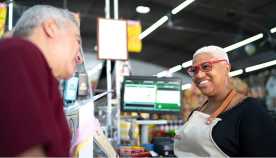AARP Eye Center
- AARP Online Community
- Games
- Games Talk
- SongTheme
- Games Tips
- Leave a Game Tip
- Ask for a Game Tip
- AARP Rewards
- AARP Rewards Connect
- Earn Activities
- Redemption
- AARP Rewards Tips
- Ask for a Rewards Tip
- Leave a Rewards Tip
- Caregiving
- Caregiving
- Grief & Loss
- Caregiving Tips
- Ask for a Caregiving Tip
- Leave a Caregiving Tip
- Help
- Membership
- Benefits & Discounts
- General Help
- Entertainment Forums
- Rock N' Roll
- Let's Play Bingo!
- Leisure & Lifestyle
- Health Forums
- Brain Health
- Conditions & Treatments
- Healthy Living
- Medicare & Insurance
- Health Tips
- Ask for a Health Tip
- Leave a Health Tip
- Home & Family Forums
- Friends & Family
- Introduce Yourself
- Housing
- Late Life Divorce
- Our Front Porch
- Money Forums
- Budget & Savings
- Scams & Fraud
- Retirement Forum
- Retirement
- Social Security
- Technology Forums
- Computer Questions & Tips
- About Our Community
- Travel Forums
- Destinations
- Work & Jobs
- Work & Jobs
- AARP Online Community
- Home & Family Forums
- Our Front Porch
- Re: Coffee !
Coffee !
- Subscribe to RSS Feed
- Mark Topic as New
- Mark Topic as Read
- Float this Topic for Current User
- Bookmark
- Subscribe
- Printer Friendly Page
- Mark as New
- Bookmark
- Subscribe
- Mute
- Subscribe to RSS Feed
- Permalink
- Report
Coffee !
I've been all over these forums & can't find the 'right forum', so mybe i'll find an answer on the front porch ? ![]()
I have 2 cans of 'cheapie' coffee ; tried mixing them so they would be more flavorful, but not-so-much did it work. Might buy a more spendy brand & mix them, but in meantime, anyone have any ideas on how to make these cheap brands taste better ?
Thanks !
- Mark as New
- Bookmark
- Subscribe
- Mute
- Subscribe to RSS Feed
- Permalink
- Report
- Mark as New
- Bookmark
- Subscribe
- Mute
- Subscribe to RSS Feed
- Permalink
- Report
6Our favorite coffee when we visited Costa Rica was Cafe Britt. We did visit and toured a coffee plantation on our Hawaiian tour.

WHAT’S IN A COFFEE FARM?
July 2016

Have you ever been sipping a delicious cup of Joe and thought to yourself where on earth did this heavenly beverage come from? We’ve all been there and Britt is here to help answer this burning question. Coffee grows on coffee plantations, each with it’s own style and culture. Here’s an inside look at what some of the plantations we work with look like. Warning: looking at these pictures may make you want to drop everything and visit Costa Rica immediately.
Plantions in general
Costa Rica has the ideal environment for coffee growth and production so there are a lot of coffee plantations around the country


The coffee beans used in your favorite blend are grown on these shrubs.

Coffee Pickers
During harvest season (November to February) the farms fill with coffee pickers who often live with their families in houses on the plantation until the season ends.

Trees
Costa Rican coffee is shade grown meaning it (you guessed it) often grows under the shade of the large trees and foliage of the area.

Animals
It’s not just coffee pickers who make their home on plantations. You’ll also see lots of animals and insects.

Fruits
Coffee beans aren’t the only thing growing here, there’s also an abundance of fresh fruit. Bananas? Guayabas? You choose!

Coffee Mill

Chancadora
This large machine removes the pulp from the outside of the coffee bean to prepare it for roasting.

Coffee Patio
A large space where the beans are left to dry after being washed.

Green beans
It may not look like much, but these little green beans are ready to be roasted!

Coffee Storage
The beans are placed in storage until it is time for them to be roasted and enjoyed by people around the world.

- Tags:
- Coffee time
- Mark as New
- Bookmark
- Subscribe
- Mute
- Subscribe to RSS Feed
- Permalink
- Report

The ad above partly tells the story. Organic and fair trade coffee help improve these working conditions. In some coffee growing areas the working conditions are improving.
Coffee’s bitter side: addressing labor conditions

A farmer in Colombia’s Nariño Department checks his coffee bushes. (© Neil Palmer, CIAT)
Editor’s note: September 29 marks National Coffee Day in the U.S. Throughout the month of September, Human Nature is publishing a special series of reports on the Sustainable Coffee Challenge, a coalition working to make coffee the world’s first sustainable agricultural product. This post is the third in the series.
The coffee sector has a labor problem – or maybe multiple labor problems.
Pruning and weeding of coffee trees, and picking the ripe cherries, is all done by hand on the vast majority of farms, and this labor accounts for up to 60 percent of production costs. Meanwhile, climate change, disease outbreaks and price fluctuations can disrupt traditional labor patterns and lead to labor shortages and create conditions for poor labor practices.
So we have to ask the question: Who is picking our coffee?
Unfortunately, it’s sometimes children. Coffee features prominently among the 75 agricultural commodities listed by the U.S. Department of Labor of goods produced by child or forced labor; the list cites child labor in the coffee-growing areas of 14 countries. Recommendations for companies to prevent these labor abuses include voluntary programs that are often expensive and difficult to implement.
Sometimes, it’s people living and working in poor conditions. Last year, an investigative report revealed “conditions analogous to slavery” in some Brazilian coffee farms, affecting some major retailers.
Sadly, the issue isn’t new and it’s not unique to coffee — but attempts to address it have largely been fragmented and insufficient to tackle the issue at scale.
Enter the Sustainable Coffee Challenge, a collaboration of over 80 actors from across the coffee sector working to make coffee the world’s first sustainable agricultural product.
Donate to help make coffee the world’s first sustainable agricultural product.
“Most discussions of labor begin with the needs and vulnerabilities of workers, but farm owners also face challenges including paper-thin or non-existent profit margins between the wages they pay workers and the sale price that they receive for their coffee, as well as the availability of farm workers during the peak of the coffee harvest,” explained Kim Elena Ionescu, Chief Sustainability Officer at SCA.
To keep labor at the forefront of the coffee sustainability conversation, SCA has made it one of the key focus areas for Avance, the association’s first sustainability conference, being held in Guatemala City on October 11th and 12th. It was important, Ionescu said, to have these difficult conversations in a place coffee is produced — with the people producing the coffee.
As companies along the coffee value chain commit to sustainable sourcing as part of the Challenge, the focus is increasingly on labor issues. While still in its relatively early stages, the Challenge aims to be a powerful platform for improving labor conditions in coffee.
To start, it is shedding light on efforts underway by the sector to address labor conditions and to understand the thicket of laws and legal frameworks that govern — or in fact, don’t — farm labor in the countries where coffee is produced.
“Coffee presents an economic development opportunity for many communities across the tropics — but it must benefit the entire community – including the farm workers who arrive during the harvest to pick the coffee,” said Bambi Semroc, senior strategic adviser at Conservation International, a member of the Sustainable Coffee Challenge. “Addressing labor conditions is critical, yet probably one of the greatest challenges — not just for coffee but for the entire agricultural sector.”
The goal, Semroc says, is to develop guidance and tools that enable the coffee sector to pinpoint potential labor hotspots and to align on joint actions. When taken at scale, these steps will help to professionalize coffee labor in a way that enhances quality and creates a pathway to prosperity for coffee workers and their families.
Sophie Bertazzo is a senior editor at Conservation International.
- Mark as New
- Bookmark
- Subscribe
- Mute
- Subscribe to RSS Feed
- Permalink
- Report
RiSE AND SHINE I'TS COFFEE TIME ❣
GOOD MONDAY MORNING MY COFFEE LOVING FRIENDS ❣
Y'ALL HAVE AN AWESOME DAY ❣ DRINK LOTS OF COFFEE TODAY ❣
MAY YOUR COFFEE BE STRONG AND YOUR MONDAY BE SHORT ❣

- Mark as New
- Bookmark
- Subscribe
- Mute
- Subscribe to RSS Feed
- Permalink
- Report
- Mark as New
- Bookmark
- Subscribe
- Mute
- Subscribe to RSS Feed
- Permalink
- Report
GREETINGS,
I AM GOING TO A COFFEE TASTING TODAY WITH THE VISITING PUPS. SO GLAD THE SEALS SENT ME DIFFERENT COFFEES, NOW I WILL BE ABLE TO TELL THE COFFEES APART. PLUS, DAVE POSTED THE HISTORY OF COFFEE. I SHOULD BE VERY PREPARED. IF NOT THE PUPS ARE SO TRAINED. I WILL GET POINTS FOR THEM.....NANCY
- Mark as New
- Bookmark
- Subscribe
- Mute
- Subscribe to RSS Feed
- Permalink
- Report
- Mark as New
- Bookmark
- Subscribe
- Mute
- Subscribe to RSS Feed
- Permalink
- Report
- Mark as New
- Bookmark
- Subscribe
- Mute
- Subscribe to RSS Feed
- Permalink
- Report
- Mark as New
- Bookmark
- Subscribe
- Mute
- Subscribe to RSS Feed
- Permalink
- Report
- Mark as New
- Bookmark
- Subscribe
- Mute
- Subscribe to RSS Feed
- Permalink
- Report
- Mark as New
- Bookmark
- Subscribe
- Mute
- Subscribe to RSS Feed
- Permalink
- Report
HISTORY OF COFFEE ETHIOPIA
The coffee plant, which was discovered in Ethiopia in the 11th Century, has a white blossom that smells like jasmine and a red, cherry-like fruit. Back then, the leaves of the so-called "magical fruit" were boiled in water and the resulting concoction was thought to have medicinal properties. As the fame of the coffee plant spread to other lands, its centuries-long voyage was about to begin.
YEMEN
Coffee spread quickly through the Arabian Peninsula. In the mid 14th century, coffee cultivation reached Yemen and for 300 years, it was drunk following the recipe first used in Ethiopia. Yemen's climate and fertile soil offered the ideal conditions for cultivating rich coffee harvests
ISTANBUL
Istanbul was introduced to coffee in 1555 during the reign of Sultan Suleiman the Magnificent by Özdemir Pasha, the Ottoman Governor of Yemen, who had grown to love the drink while stationed in that country.
In the Ottoman palace a new method of drinking coffee was discovered: the beans were roasted over a fire, finely ground and then slowly cooked with water on the ashes of a charcoal fire. With its new brewing method and aroma, coffee's renown soon spread even further afield.
Coffee soon became a vital part of palace cuisine and was very popular in court. The position of Chief Coffee Maker (kahvecibaşı) was added to the roster of court functionaries. The Chief Coffee Maker's duty was to brew the Sultan's or his patron's coffee, and was chosen for his loyalty and ability to keep secrets. The annals of Ottoman History record a number of Chief Coffee Makers who rose through the ranks to become Grand Viziers to the Sultan.
Coffee soon spread from the palace to grand mansions, and from grand mansions to the homes of the public. The people of Istanbul quickly became enamored with the beverage. Green coffee beans were purchased and then roasted at home on pans. The beans were then ground in mortars and brewed in coffeepots known as "cezve".
Most of the general public became acquainted with coffee through the establishment of coffeehouses; the first coffeehouse (named Kiva Han) opened in the district of Tahtakale and others rapidly cropped up all over the city. Coffeehouses and coffee culture soon became an integral part of Istanbul social culture; people came here throughout the day to read books and beautiful texts, play chess and backgammon and discuss poetry and literature.
Thanks to the efforts of merchants and travelers who passed through Istanbul, Turkish Coffee's soon spread to Europe and ultimately to the whole world.
VENICE
Europeans got their first taste of coffee in 1615 when Venetian merchants who had become acquainted with the drink in Istanbul carried it back with them to Venice. At first, the beverage was sold on the street by lemonade vendors, but in 1645 the first coffeehouse opened in Italy. Coffeehouses soon sprang up all over the country and, as in many other lands, they became a platform for people from all walks of life, especially artists and students, to come together and chat.
Travelers who discovered coffee while staying in Istanbul extolled the matchless flavour of the beverage in letters they sent home to Marseilles. In 1644, the first coffee beans, along with the apparatus used to prepare and serve coffee, were brought to Marseilles by Monsieur de la Roque, the French ambassador.
MARSEILLES IN 1660, MERCHANTS FROM MARSEILLES WHO HAD GROWN TO LOVE THE BEVERAGE THEY HAD FIRST TASTED IN ISTANBUL BEGAN TO IMPORT COFFEE TO THE CITY, THUS SATING MARSEILLES'S GROWING APPETITE FOR COFFEE. THE FIRST COFFEEHOUSE OPENED IN MARSEILLES IN 1671. INITIALLY, COFFEEHOUSES CATERED TO MERCHANTS AND TRAVELLERS, BUT THEY SOON BECAME POPULAR WITH PEOPLE FROM ALL WALKS OF LIFE. PARIS
Paris was introduced to coffee in 1669 by Hoşsohbet Nüktedan Süleyman Ağa, who was sent by Sultan Mehmet IV as ambassador to the court of King Louis XIV of France. Among the Ottoman ambassador's possessions were several sacks of coffee, which he described to the French as a "magical beverage".
Süleyman Ağa swiftly became the darling of Parisian high society. The Parisian aristocracy saw it as a great honour to be invited to share a cup of Turkish Coffee with Süleyman Ağa, who regaled his guests with his pleasant wit and conversation. The ambassador related countless stories on the subject of coffee, which earned him the sobriquet of Hoşsohbet, or raconteur.
Paris's first real coffeehouse, Café de Procope, opened in 1686. It soon became a favourite haunt of the literati, a place frequented by renowned poets, playwrights, actors and musicians. Many famous figures such as Rousseau, Diderot and Voltaire became enamoured with coffee at Café de Procope. Following the trend set by Café de Procope, coffeehouses opened on practically every street in the city.
VIENNA
1683 marked the end of the Second Siege of Vienna. As the Turks retreated, they left their extra supplies behind. The abandoned goods included a large number of tents, livestock, grain and around 500 sacks of coffee. The Viennese had no idea what to make of the mysterious contents of the sacks. One Viennese captain claimed that the coffee beans were camel-feed and decided to dump the sacks into the Danube.
News of the mysterious sacks reached a gentleman named Kolschitzky who had lived among the Turks for many years and had served as a spy for the Austrians during the siege. He requested the sacks of coffee, with which he was very familiar, as payment for his successful espionage services during the siege.
Kolschitzky served small cups of Turkish Coffee to the Viennese, first going door to door, and then in a large tent that he opened to the public. Soon, he had taught the Viennese how to prepare and enjoy the beverage. Thus Vienna became acquainted with coffee.
The Viennese coffeehouses that opened during this period set an example for coffeehouses in many other countries.
LONDON
England first became acquainted with coffee in 1637 when a Turk introduced the drink to Oxford. It quickly became popular among students and teachers who established the "Oxford Coffee Club".
The first coffeehouse in Oxford opened in 1650 and was called the "Angel".
In 1652, a Greek named Pasqua Rosée opened the first coffeehouse in London. Using his extensive knowledge of how to prepare and brew Turkish Coffee, he introduced his friends and clients to its peerless taste.
By 1660, London's coffeehouses had become an integral part of its social culture. The general public dubbed coffee houses "Penny Universities" as they were patronised by writers, artists, poets, lawyers, politicians and philosophers. London's coffeehouses offered customers a great deal more than piping hot cups of coffee: the entrance fee of one penny allowed them to benefit from the intellectual conversation that surrounded them.
HOLLAND
The history of coffee in Holland is markedly different from that of other countries, as for many years the Dutch were more concerned with coffee as a trade commodity than as a beverage.
Coffee first reached the country via Yemen in the 17th century. The Dutch began cultivating coffee in its colonies. In 1699, coffee beans were planted on the island of Java, thus laying the foundation for Indonesia's coffee plantations. In 1711, the first Javanese coffee beans were sold on the open market in Amsterdam.
The first coffeehouses in Holland opened in the 1660s. With their unique style that featured rich décor, a warm atmosphere and lush gardens, they stood out from coffeehouses in other countries. Located mainly in the financial districts of Dutch cities, they became known as places where merchants and financiers conducted business meetings.
In the 1680s, the Dutch introduced coffee to Scandinavia, the region which today has the highest per capita consumption of coffee in the world.
GERMANY
Coffee was introduced to Germany in 1675. The first coffeehouses opened in 1679-1680 in Hamburg, Bremen and Hanover.
At first, coffee was considered a beverage of the nobility. The middle and lower classes were not introduced to coffee until the early 18th century, and it was only much later that it came to be prepared and consumed at home.
As coffeehouses were the domain of men, middle class women established their own "coffee clubs".
The oldest coffee house in Europe beside the Parisian “Café Procope” is to be found in Leipzig, Germany. In 1694 Heinrich Schütze opened the “Coffe Baum” in 4 Kleine Fleischergasse and gave out free coffee. Over the following three centuries, many notable personages met here and enjoyed the popular drink. Gottsched, Klinger, E. T. A. Hoffmann or Wagner were often seen going in and out. Goethe, Lessing, Bach and Grieg were also known to be guests there. In the Schumann Room situated on the ground floor, Robert Schumann would meet with friends at his regular table between 1828 and 1844. Revolutionaries such as Blum, Liebknecht and Bebel also made “Coffe Baum” their second living-room. In 1990 Helmut Kohl and Lothar de Maizière discussed the possibilities of reunification here.
The sandstone sculpture above the doorway to “Coffe Baum” is especially famous. An Ottoman offers cupid a cup of coffee. It symbolises the meeting of the Christian western world with the Islamic East. No other than Augustus the Strong was supposed to have donated this sculpture as way of saying thank you to the landlady, who had taken immaculate care of him. One of the most important coffee museums’ worldwide is to be found on the third floor. Over 500 chosen exhibits from 300 years of Saxony’s coffee and cultural history are presented over 15 rooms.
AMERICA
Coffee reached North America in 1668. The first coffeehouse in New York, "The King's Arms", opened in 1696.
In 1714, the Dutch presented Louis XIV with a coffee sapling from their plantations on Java. The sapling was planted in the royal Jardin des Plantes in Paris.
In 1723, a French mariner named Gabriel du Clieu took a sapling from the Jardin des Plantes to the island of Martinique. From here, the coffee plant spread to other Caribbean islands, as well as to Central and South America.
In 1727, a Portuguese sailor named de Mello Palheta carried coffee saplings to Brazil from French Guyana. Today, Brazil is the number one producer of coffee in the world, accounting for 35% of global coffee production.
In 1730, the British began cultivating coffee in Jamaica.
By the mid 19th century, coffee had become one of the most important commodities in world trade.
MOBILE TURKISH COFFEE TRUCK IN 2013
Turkish Coffee World was one of the proud sponsors of this cultural event.
- Mark as New
- Bookmark
- Subscribe
- Mute
- Subscribe to RSS Feed
- Permalink
- Report
- Mark as New
- Bookmark
- Subscribe
- Mute
- Subscribe to RSS Feed
- Permalink
- Report
- Mark as New
- Bookmark
- Subscribe
- Mute
- Subscribe to RSS Feed
- Permalink
- Report
"I downloaded AARP Perks to assist in staying connected and never missing out on a discount!" -LeeshaD341679



































































